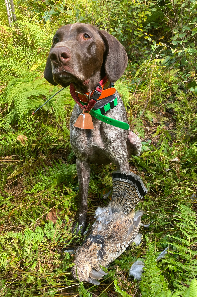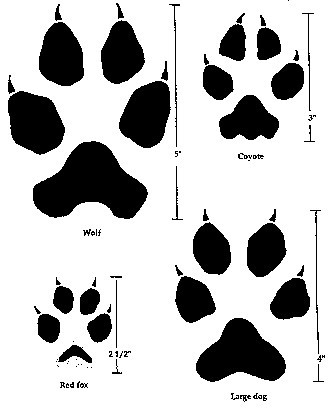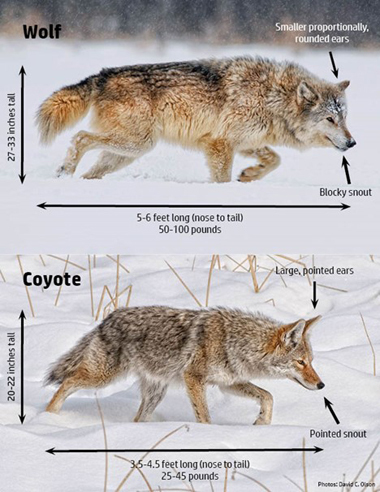Hunting and Trapping Newsletter
The New York State Department of Environmental Conservation sent this bulletin on 10/12/2022 11:30 AM EDT |
| DEC Delivers - Information to keep you connected and informed from the NYS Department of Environmental Conservation |
| Share or view as a web page || Update preferences or unsubscribe |
Hunting and Trapping Newsletter |
Lifesaving Tips for Tree Stand SafetyEvery year, hunters are seriously injured, paralyzed, or killed falling out of tree stands. Falls from tree stands have become a major cause of hunting related injuries and fatalities in New York. In 2021, DEC investigated 10 tree stand incidents. One hunter was killed and nine suffered critical injuries. Only one of the hunters who fell was wearing a safety harness, however the harness was not attached to the tree when the hunter fell. The proper use of tree stands and full-body harnesses will help to prevent these injuries and fatalities. Hunting from a tree stand is a safe and enjoyable way to hunt as long as a few basic safety principles are followed:
Epizootic Hemorrhagic Disease (EHD) in New York StateDeer populations in New York are being affected by isolated outbreaks of epizootic hemorrhagic disease (EHD) for the third consecutive year in 2022. EHD was first confirmed in eastern Dutchess County in early August, followed by western Rensselaer and Suffolk Counties at the end of August. So far this summer/fall, DEC has received 165 reports of deer suspected to have/had EHD, and is currently working to sample additional deer to better understand the full extent of these outbreaks. This year’s outbreaks are more localized than those that affected New York in 2020 and 2021. For comparison, over 1500 deer suspected to have/had EHD were reported to DEC by the public in both 2020 and 2021. Deer populations in the EHD-affected counties are very productive, and should recover over a period of years. DEC has reduced the number of deer management permits available to hunters in certain wildlife management units to account for these repeat EHD outbreaks and will continue to do so as necessary based on best available information to help the deer population recover. EHD outbreaks typically end with the first hard frost which kills off the Culicoides midges that spread the disease. To help DEC make deer management decisions using the best information, we encourage everyone to submit reports of EHD-suspected deer through DEC’s online EHD reporting form, and hunters to participate in the bowhunter sighting log and to report all deer harvested. Grouse or woodcock hunter? Please consider joining our hunting log project!
Grouse and woodcock populations throughout the Northeast have experienced long-term slow declines, primarily due to habitat loss and disease threats. To monitor hunter success and get an index of populations and migration (for woodcock), DEC conducts two surveys each fall. The first survey is a hunting log that asks hunters to record their daily grouse and woodcock hunting activities, including the number of birds flushed and the number of hours hunted. The primary purpose of the log is to monitor the number of birds flushed per hour. Grouse and woodcock share many of the same habitats, so the information you provide will help monitor populations of both of these great game birds as habitats and populations change. For the second survey, we request assistance from hunters in collecting rump, wing, and tail feathers from birds harvested during the season so we can identify the age and sex composition of the harvest. This information is important to help biologists understand productivity (number of young) in the fall population. If you are a grouse or woodcock hunter and are interested in participating in either of these surveys, please contact wildlife@dec.ny.gov or 518-402-8883. If you e-mail us, please include “Grouse log” in the title or “grouse parts”. Thank you for your help monitoring grouse populations. For results of these surveys from last year, please see the 2021-2022 Grouse and Woodcock Hunting Log Results report (PDF). Wolf vs. CoyoteLast month, genetic testing confirmed that a canid taken by a hunter in Otsego County in 2021 was a wolf. We have documented a few wolves and wolf hybrids over the last 20 years in New York. In most cases, analyses indicated these animals were released from captivity. While the origin of this animal is still being investigated, DEC reminds hunters and trappers that wolves are protected in New York as an endangered species. Wild wolves are present in portions of Ontario and Quebec, and it is possible for these animals to travel into New York. With the opening of coyote hunting and trapping seasons this fall, care should be taken in identifying any large canids encountered. Wolves can be distinguished from coyotes by their larger size (Eastern coyotes rarely weigh more than 50 pounds); proportionally smaller, rounded ears; and broader head and snouts (see images below).
If you suspect that you have seen a wolf, please report it to DEC. If possible, get pictures of the animal and/or its tracks, preferably with something in the image for scale. If you have a canine in a trap that is over 4.5 ft. in length (tip of nose to tip of tail) and appears to be over 50 pounds, contact NYSDEC law enforcement (1-844-332-3267) before dispatching the animal. New Firearm Laws Q&ANew York State recently adopted new requirements for the purchase and transfer of ownership of semi-automatic rifles and the purchase, possession, storage, and transport of firearms and ammunition in New York. See Questions and Answers Regarding Impacts to Hunting and Hunting-Related Activities from Recent Changes to New York State Firearm Laws (PDF). |



